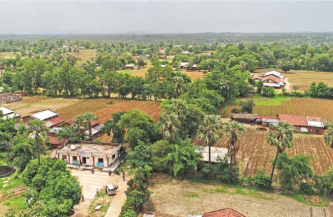Working towards water security : Oliamba’s Tale of Triumph

Introduction
Oliamba village is located in the Chhota Udepur District of Gujarat,which is predominantly populated by the Rathwa tribe. To the north of the villagelies the Orsangatributary, which is an important tributary of the Narmada River. The village has undulating land interspersed with small hills, rivers and nallas. Two-thirds of the land in the village is under agricultural use, most of which (91%) is rainfed. In rabi season, when work is not available in the village, people migrate with their families to other parts of Gujarat, mainly to Saurashtra, for their livelihood.
Oliamba has been facing severe water scar city due to excess run-off of surface water and low infiltration of water into the soil. This, in turn, affects the supply of water for the irrigation of farmland. The quantity of rainfall has been diminishing in Chhota Udepur Taluka due to indiscriminate felling of trees, which also exacerbated erosion of topsoil. Insufficient and untimely rains have made farming not viablein Oliamba. Crop failure has also been very common. In order to address this issue, the Gram Panchayat and MGNREGS team collectively identified a common land closer to the farms for taking up water conservation works.
VOICE
“The area of cultivation is increasing with the availability
of water. There are many structures in the village now
such as khet talavdi, check walls & check dams and water
is available almost throughout the year”.
— Jaggubhai Rathwa, Farmer

Implementation
The work was taken up during 2017-19 by the Gram Panchayat as the implementing agency at the total cost of Rs. 48.89 lakh.
The details are as under:


IMPACT:
As a result of the implementation of this work, 86.5 hectares of land and 30 households have been benefitted. Livestock consisting of more than 500 cattle and 300 goats have got sufficient drinking water facilities and folder. As per the villagers’ testimony, the works have led to an improvement in the groundwater table and an increase in net sown area and agricultural production, which leads to reduction in migration. The secondary impact is the decline in the school dropout ratio.

VOICE
We used to go to the Kathiyawad for labour as there was no work available in the village. Almost everyone in the village was migrating for work. There were cases of crop failures due to scarcity of water. Now, we cultivate paddy and maize for two seasons and have also started growing vegetables. The agriculture productivity has improved significantly as compared to the earlier position”.
—Mithiyabhai Rathwa, farmer



Total Comments - 0